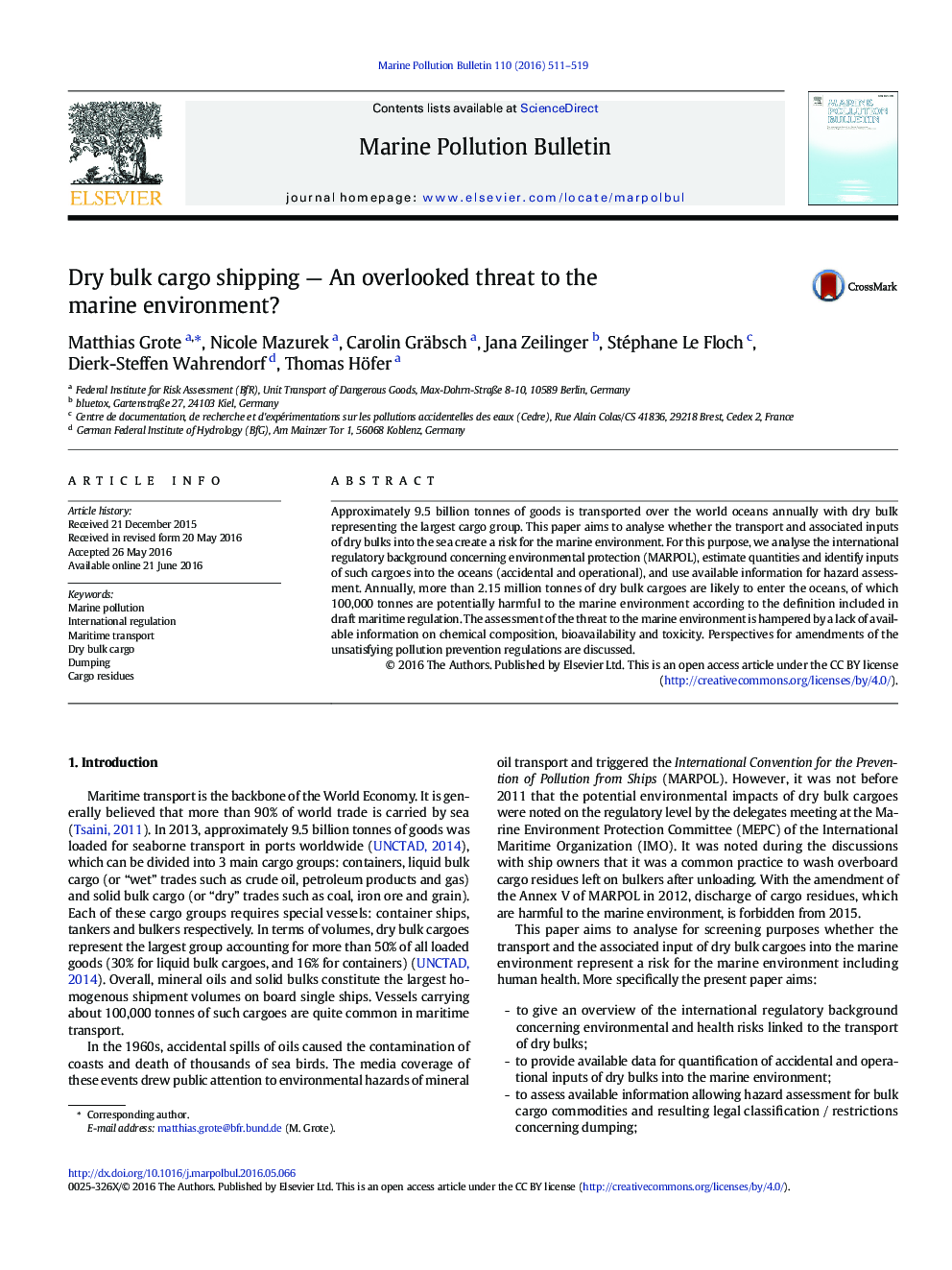| Article ID | Journal | Published Year | Pages | File Type |
|---|---|---|---|---|
| 6355742 | Marine Pollution Bulletin | 2016 | 9 Pages |
â¢Dumping of cargo residues after unloading dry bulk cargo carriers (bulkers) at sea is taking place on a regular basis is creating a pollution threat.â¢Chemical compositions of all 168 bulk cargoes registered in maritime regulations are analysed.â¢The hazard classification approach used by maritime regulators for identifying cargoes as hazardous to the marine environment is applied and discussed.â¢The marine risk assessment created by this dumping is hampered by a lack of information on properties and volumes of cargoes involved.
Approximately 9.5 billion tonnes of goods is transported over the world oceans annually with dry bulk representing the largest cargo group. This paper aims to analyse whether the transport and associated inputs of dry bulks into the sea create a risk for the marine environment. For this purpose, we analyse the international regulatory background concerning environmental protection (MARPOL), estimate quantities and identify inputs of such cargoes into the oceans (accidental and operational), and use available information for hazard assessment. Annually, more than 2.15 million tonnes of dry bulk cargoes are likely to enter the oceans, of which 100,000 tonnes are potentially harmful to the marine environment according to the definition included in draft maritime regulation. The assessment of the threat to the marine environment is hampered by a lack of available information on chemical composition, bioavailability and toxicity. Perspectives for amendments of the unsatisfying pollution prevention regulations are discussed.
